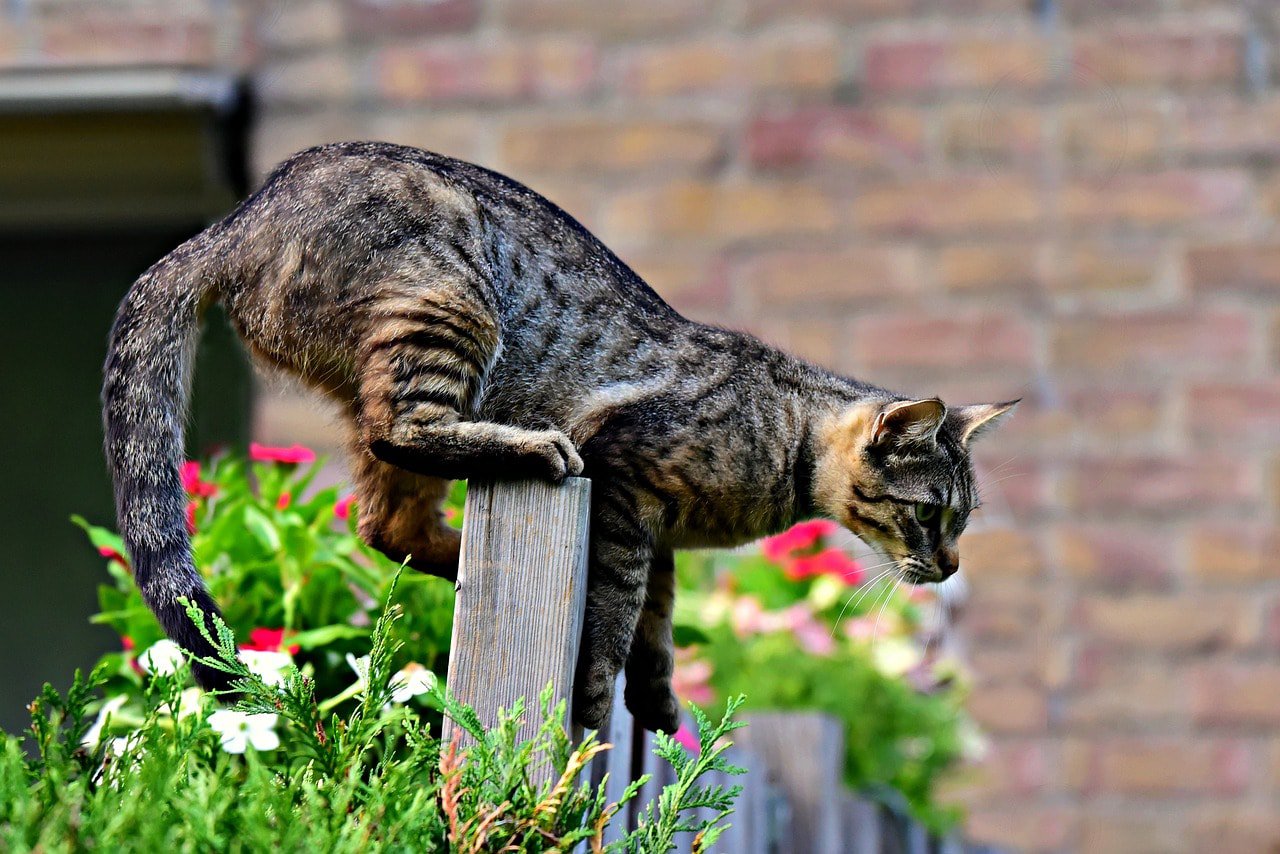VET APPROVED

The information is current and up-to-date in accordance with the latest veterinarian research.
Learn more »Click to Skip Ahead
While it’s absolutely not ideal, accidents can happen, and sometimes, cats fall from very high heights. We’ve all heard that cats always land on their feet, but from some heights, no matter how you land, serious injury or death awaits. How high can a cat fall from and still survive, though?

How High Can a Cat Survive a Fall?
In general, if a cat falls from five stories (about 50 feet) or less, they have a good chance of survival. Interestingly, cats that fall from less than 7 stories have actually been found to suffer from more injuries than those that fall from higher.
This is thought to be as the higher the distance they fall from the longer they have to right themselves. When falling from higher than seven to nine stories they reach terminal velocity, or the maximum speed at which an object can fall. Once they reach this speed, they will begin to relax and stretch themselves out, reducing the damage done to their body when they land.
One study1 performed in 1987 looked at 132 cats that had fallen from high distances, with the average being 5.5 stories. Of those cats, 90% of them had some kind of thoracic (chest) trauma and emergency veterinary treatment was needed in 37% of these, or the injuries they had suffered would have been fatal.
One thing that has not been accounted for in studies indicating that cats that fall from higher distances often survive is survivorship bias. Survivorship bias means that cats that survived their fall are more likely to be taken to the vet than cats that die from their fall. While this could impact the numbers, there is still evidence that indicates that falls from higher distances are often more survivable.
Cats have been recorded falling2 from as high as 20–30 stories or more and still surviving. Theoretically, as long as there are no other factors at play, like sharp landing surfaces, lack of oxygen, and wind, a cat could potentially survive a fall from any height.

Keeping Your Cat Safe
There are many reasons that a cat may fall from a high distance, but the most common falls from high up are either from trees, balconies, or buildings. Younger cats under 3 years of age are usually more susceptible to falls as they are more active and playful, as well as inexperienced with possible hazards. Keeping your cat secure and safe when they are located high up will reduce the risk of falls and injuries.
If your cat is a notorious tree climber, then consider keeping them indoors only. You can also consider providing them with an enclosed catio outside, giving them outdoor time without the risks associated with freedom outside.
If your cat spends time on a balcony or porch that is located above ground level, then consider enclosing it completely. Mesh, chicken wire, and other types of fencing can create a secure environment without impacting the view significantly. This can allow your cat the freedom to bird watch and spend time in their favorite place without the risk of falling or jumping.
Also, provide your cat with plenty of activities, toys, scratchers, and attention. This will make them less likely to set out in search of an adventure that may result in injury.
If your cat falls from more than a few feet, it’s a good idea to call your vet and get them checked over, just in case.

Conclusion
Cats have incredible bodies that can withstand falls from exceptional heights, thanks to their relatively low terminal velocity of around 60 miles per hour, as well as their ability to relax their body when falling and right themselves. This reduces the damage done to the body on landing. Cats are experts at hiding pain, so it is possible that your cat could injure themselves and not show you any signs.
- How Can a Cat Survive a High-Rise Fall? Physics! | WIRED
- https://www.sciencefocus.com/nature/what-is-the-maximum-height-a-cat-can-fall-from-and-survive/
- What is the maximum height a cat can fall from and survive? | BBC Science Focus Magazine
- High-rise syndrome – Wikipedia
- https://www.bbc.com/news/magazine-17492802#
- https://www.businessinsider.com/how-cat-survived-32-story-fall-2018-10
Featured Image Credit: Nils Jacobi, Shutterstock












